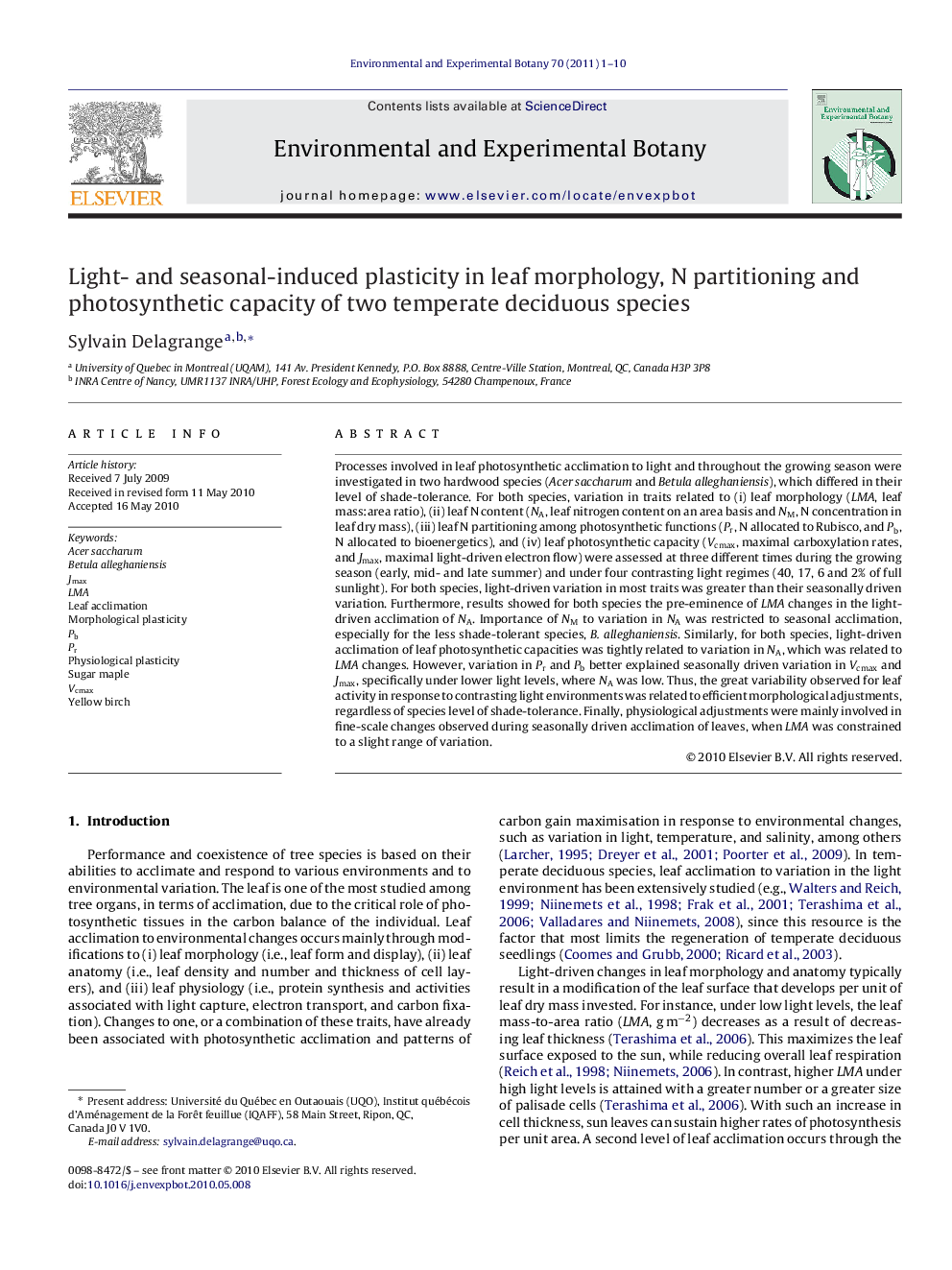| کد مقاله | کد نشریه | سال انتشار | مقاله انگلیسی | نسخه تمام متن |
|---|---|---|---|---|
| 4554983 | 1329238 | 2011 | 10 صفحه PDF | دانلود رایگان |

Processes involved in leaf photosynthetic acclimation to light and throughout the growing season were investigated in two hardwood species (Acer saccharum and Betula alleghaniensis), which differed in their level of shade-tolerance. For both species, variation in traits related to (i) leaf morphology (LMA, leaf mass:area ratio), (ii) leaf N content (NA, leaf nitrogen content on an area basis and NM, N concentration in leaf dry mass), (iii) leaf N partitioning among photosynthetic functions (Pr, N allocated to Rubisco, and Pb, N allocated to bioenergetics), and (iv) leaf photosynthetic capacity (Vcmax, maximal carboxylation rates, and Jmax, maximal light-driven electron flow) were assessed at three different times during the growing season (early, mid- and late summer) and under four contrasting light regimes (40, 17, 6 and 2% of full sunlight). For both species, light-driven variation in most traits was greater than their seasonally driven variation. Furthermore, results showed for both species the pre-eminence of LMA changes in the light-driven acclimation of NA. Importance of NM to variation in NA was restricted to seasonal acclimation, especially for the less shade-tolerant species, B. alleghaniensis. Similarly, for both species, light-driven acclimation of leaf photosynthetic capacities was tightly related to variation in NA, which was related to LMA changes. However, variation in Pr and Pb better explained seasonally driven variation in Vcmax and Jmax, specifically under lower light levels, where NA was low. Thus, the great variability observed for leaf activity in response to contrasting light environments was related to efficient morphological adjustments, regardless of species level of shade-tolerance. Finally, physiological adjustments were mainly involved in fine-scale changes observed during seasonally driven acclimation of leaves, when LMA was constrained to a slight range of variation.
Journal: Environmental and Experimental Botany - Volume 70, Issue 1, January 2011, Pages 1–10